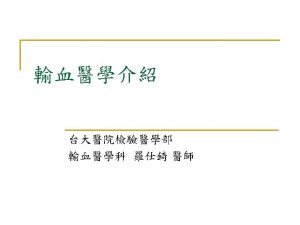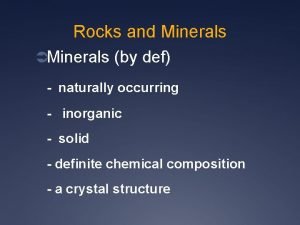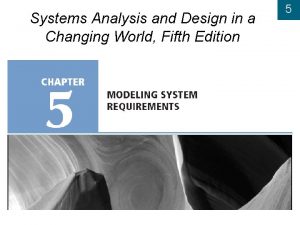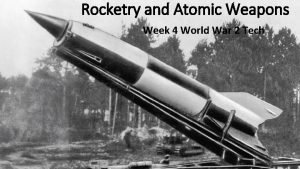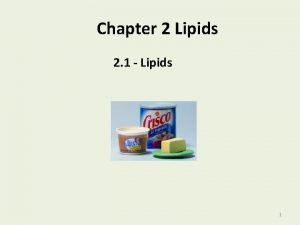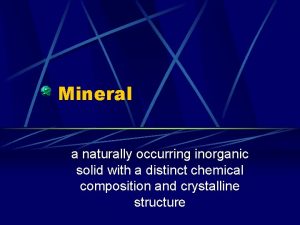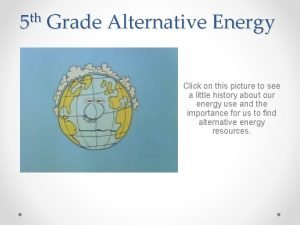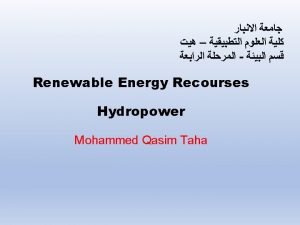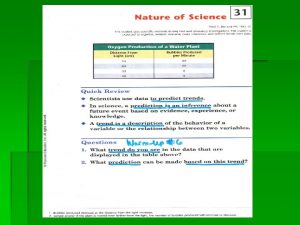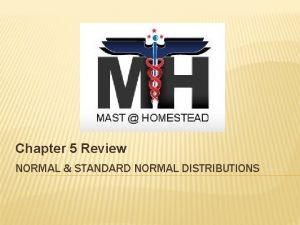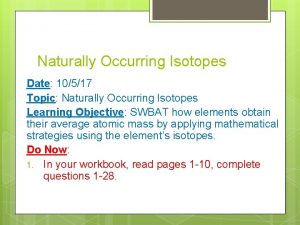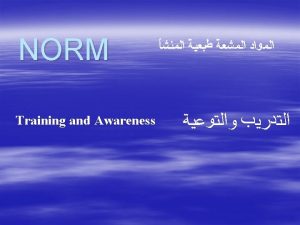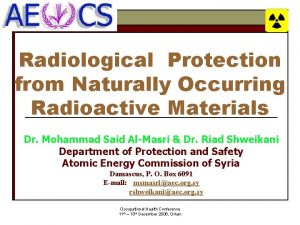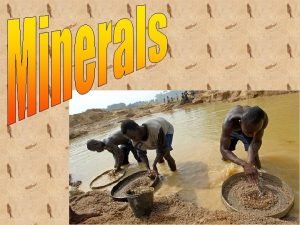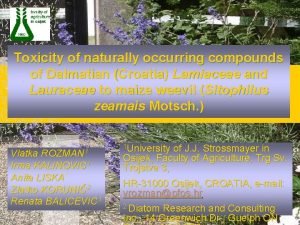What is NORM NORM or naturally occurring radioactive











- Slides: 11


What is NORM? NORM, or naturally occurring radioactive material, is found almost everywhere. In the exploration and extraction processes of oil and gas, the natural radionuclides 238 U, 235 U and 232 Th, as well as the radium-radionuclides (223 Ra, 224 Ra, 226 Ra and 228 Ra) and 210 Pb, . etc. , are brought to the slurry surfaces and may contain levels of radioactivity above the surface background. • The radionuclides of interest include long-lived radionuclides such as – uranium-238 (238 U) – uranium-235 (235 U) – thorium-232 (232 Th) and their radioactive decay products such as isotopes of – radium – radon – polonium – bismuth – lead and individual long-lived radionuclides such as – potassium-40 (40 K) – rubidium-87 (87 Rb) – indium-115 (115 In)

NORM in the Oil and Gas Industry Oil and gas NORM is created in the production process, when produced fluids from reservoirs carry sulfates up to the surface of the Earth's crust. Barium, Calcium and Strontium sulfates are larger compounds, and the smaller atoms, such as Radium 226 and Radium 228 can fit into the empty spaces of the compound and be carried through the produced fluids. As the fluids approach the surface, changes in the temperature and pressure cause the Barium, Calcium, Strontium and Radium sulfates to precipitate out of solution and form scale on the inside, or on occasion, the outside of the tubulars and/or casing. On the other hand, NORM accumulated with time as sluge in petroleum refinery units

Why is it a hazard. • • • The naturally radioactive material is concentrated into these deposits. They become sufficiently active to require precautions to be taken when working with them. They emit alpha, beta and gamma radiation. They also require to be disposed of in a controlled manner under International regulations. Two decay series found in NORM deposits – from U-238 and Th-232. • Uranium-238 emits alphas, betas and gammas decaying through protoactinium, thorium, radon, polonium and bismuth to stable lead-206. • Thorium-232 emits alphas, betas and gammas decaying through radium, actinium, radon, bismuth, polonium and thallium to stable lead-208.


Why NORM Occurs • Reservoir rock contains small amounts of natural uranium and thorium and their radioactive daughters. One daughter, radium, is water soluble - dissolves in the reservoir water. • Radium can precipitate with the barium and calcium ions to make any scales slightly radioactive. (NORM) • Clay and fine particles can absorb the radium from the formation water.

NORM in Gas Wells • NORM can also be found in Gas Wells where no liquids are present. • Here it is due to radioactive lead-210 plating out on surfaces from the gas. • The gas is radioactive because of the radioactive radon gas in the formation accumulating in it. • This radon then decays to the lead-210 • This layer is thin and cannot always be seen


Shell standard NORM meter for oil systems- Mini 900 with 44 B probe. • 5 cps above background is the lowest statistically reliable reading with the meter • We identify contamination, we do not measure scale or deposits activity. • Using the Mini 900 a reading of 5 cps above background is NORM. • Science of protecting people and the environment from the harmful effects of ionizing radiation, which includes both particle radiation and high energy electromagnetic radiation

NORM Regulations United States: still quarrelling between EPA and state departments who sits in the driving seat to regulate NORM (“How far should a riskbased approach in view of the natural background radiation dose be pushed. Latest CRCPD draft part N – 1999. Malaysian 1996: skipped formerly issued ‘release concentrations for solids’. Especially for scale and sludge disposal a “Radiological Impact Assessment” demonstrating compliance with the ICRP public dose limit is required. Canada 2000: previous guidelines reviewed and reissued nation-wide. “Unconditional Release Limits” derived from enveloping total-dose assessment scenarios provided for environmental media (air, water, soil). NORM dose constraint set at 300 m. Sv/y. Allowance for Conditional Release Limits by having carried out dedicated total-dose assessment scenarios. European Union: 2000 implementation of EC Directive 96/29/Euratom and accompanying guidance documents did not (yet) achieve full harmonisation for member state E&P NORM regulations. Middle East: several gas/oil producing states (Egypt, Oman, Syria, UAE) start to issue national E&P NORM Regulations.

 High frequency antibodies
High frequency antibodies Naturally occurring mineral
Naturally occurring mineral Largest naturally occurring element
Largest naturally occurring element Is a naturally occurring association among specific things
Is a naturally occurring association among specific things Largest naturally occurring element
Largest naturally occurring element Naturally occuring fatty acids
Naturally occuring fatty acids Naturally occurring inorganic solid material
Naturally occurring inorganic solid material Disadvantages of geothermal energy
Disadvantages of geothermal energy Naturally occurring areas of hydrothermal resources
Naturally occurring areas of hydrothermal resources Naturally occurring areas of hydrothermal resources
Naturally occurring areas of hydrothermal resources What process is occurring
What process is occurring Find the probability of z occurring in the indicated region
Find the probability of z occurring in the indicated region
